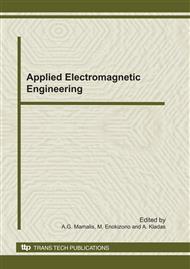p.369
p.381
p.391
p.399
p.407
p.415
p.425
p.435
p.447
Generation Expansion Planning of Crete Power System for High Penetration of Renewable Energy Sources
Abstract:
In this paper the Crete’s Island power system, which is the largest isolated power system in Greece, is analyzed in two long term scenarios in order to estimate the corresponding costs and benefits associated with a significant high electricity production from renewable energy sources (RES) technologies in the period 2009-2020. In the first scenario, a 20% RES energy penetration in year 2020 is assumed, while in the second scenario the final RES energy penetration is increased to 50%, and it is achieved with the installation of hydro pumped storage systems. Long-range Energy Alternatives Planning (LEAP) software is used to develop the electricity demand model, as well as to estimate the gross electricity generation in Crete and the annual CO2 equivalent emissions for the considered scenarios. This study demonstrates that substantial RES production till 2020 is technically feasible, and provides benefits in the forms of carbon emission reductions, energy adequacy and dependency.
Info:
Periodical:
Pages:
407-414
Citation:
Online since:
December 2010
Price:
Сopyright:
© 2011 Trans Tech Publications Ltd. All Rights Reserved
Share:
Citation:


